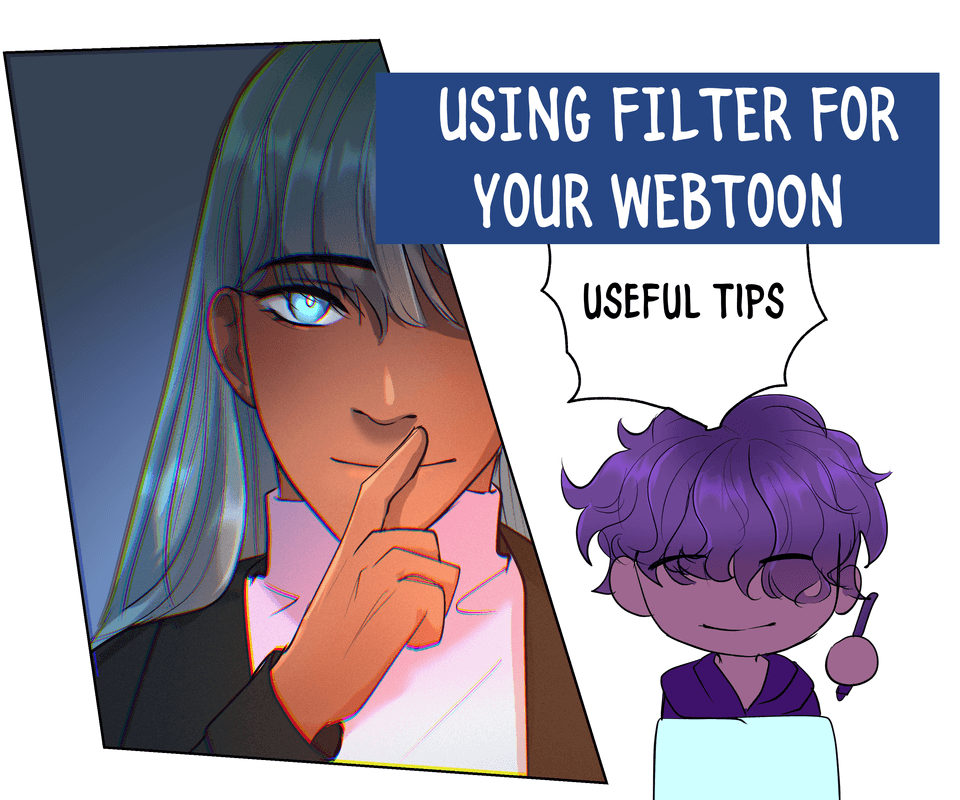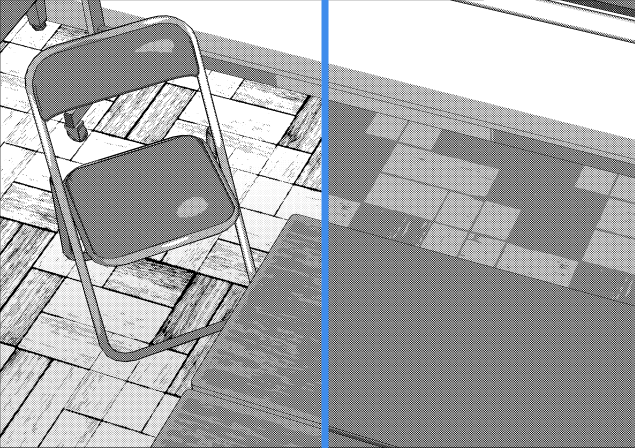9. Finishing Details
Here, I will make final adjustments such adding lines and altering the shadows and highlights.
[1] Adding lines
After painting, there are more colored areas and fewer lines.
This can create a slightly blurred impression in some places. Therefore, I take a look at the whole picture and add extra lines to places where the lines are too faint.
I display all the layers so I can see the overall balance.
I was concerned that lines on the characters were too faint, so I decided to add more lines.
I create a new layer above both “Character 1” and “Character 2” layer folders and change the layer name to “Lines”.
I add lines to parts covered by painting, especially exterior lines, usng the brush “Hard pencil 2" (size 6 to 7 px, opacity 100%).
Excess lines can harm the overall balance, so I keep to a moderate amount of lines.
[2] Fixing shadows and highlights
Next, I will fix the shadows below the characters.
I display the “Shadow 2” layer created in the rough draft stage. After adjusting the shape to some extent according to the position of the feet, I add a layer mask to make certain parts slightly thinner.
Next I’ll tidy up the shadows near the edges of the canvas in the same way.
At the rough draft stage, I wasn’t sure whether I would use these shadows, but I decide to keep them. This is because the darker canvas creates an atmosphere similar to a cave or a tunnel.
I display the “Shadow 2” layer. The shadows were drawn with sharp lines in the rough draft stage, so I blur the entire layer and then added some extra shadows.
The last thing to do is tidy up the scattered grains of light.
On the “Light” layer I tidy up any parts where the shape is messy, and add extra light to some areas.
Then, I duplicate the “Light” layer using “Duplicate Layer” from the layer menu.
After that, I use [Merge with layer below] to make the light a bit stronger, then fade out some parts with the [Eraser] tool.
Now I’ve finished my illustration.
[3] Adding texture
To add a traditional feeling, I will use a texture.
I go to the left tree view of the [Material palette] and select [Monochromatic pattern] > [Texture]. Here, I select the texture “Oil paint”.
I drag the selected material in to [Layer] palette and place it.
Above the “Oil paint” texture, I open the [Layer] menu > [New Layer] > [Fill], and create a [Fill] layer with a muted ochre color.
Hint:
Please read the following to learn more about Fill layers.
I set the blending mode of the yellow [Fill] layer to [Overlay].
Then, I use [Merge with layer below] to combine it with the “Oil paint” texture layer.
From the [Layer] menu, I select [New Correction Layer] > [Hue/Saturation/Luminosity] and apply the following settings.
I combine the new correction layer and the oil paint layer using [Merge with layer below].
Then, I lower the layer’s opacity to 32%. Finally, I change the blending mode of the [Layer] to [Darken] to complete my illustration.
























Comment